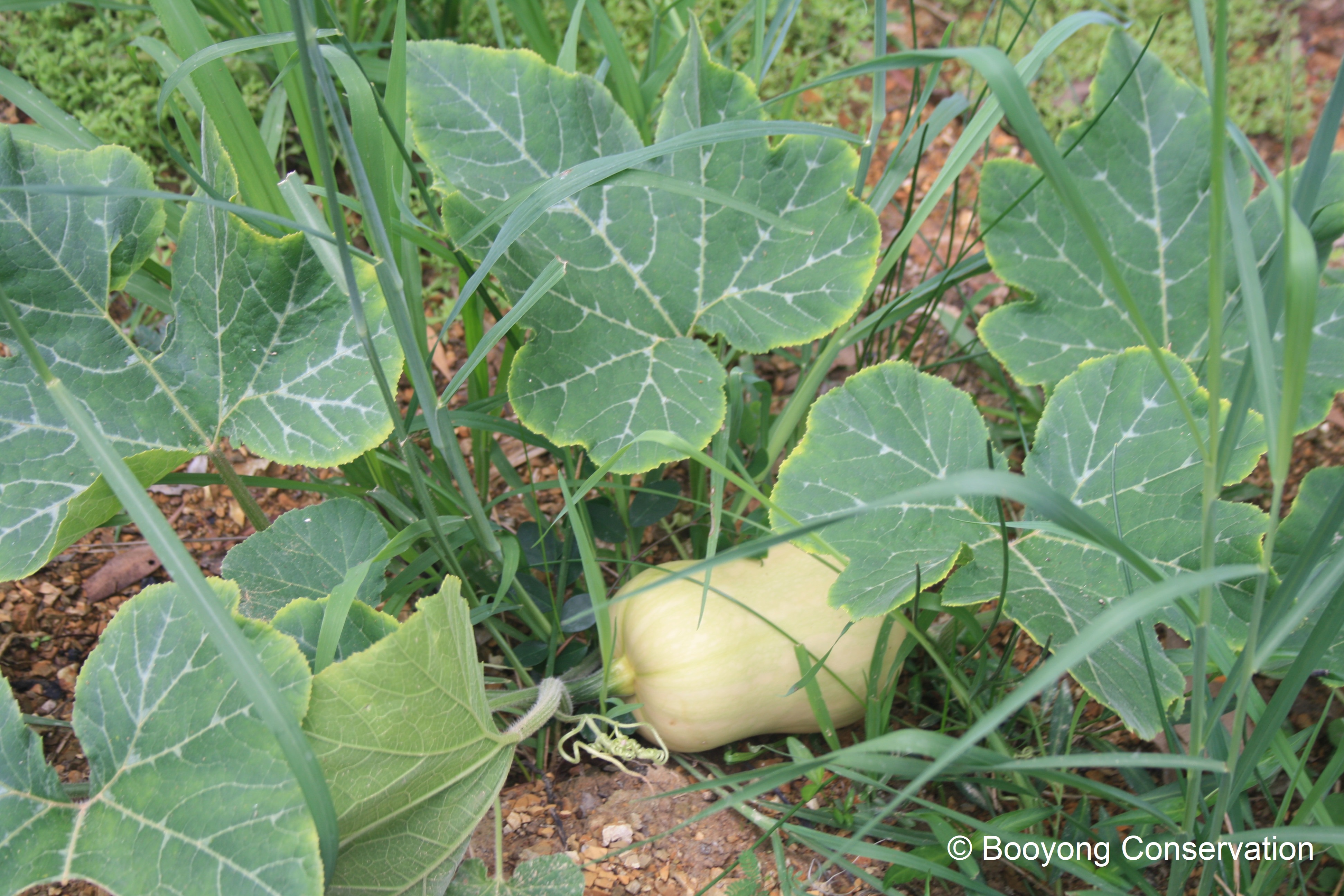We crop swapped some butternut pumpkins seeds and decided to give them a go on the terrace of our new dam (the perfect location, as we have lots of space). Butternut pumpkins are a family favourite as they are sweeter and nuttier than others, and they have a large portion of vegetable with no seeds. This makes them so much easier to prepare.
They can be grown either along the ground or up along a trellises, similar to a vine, and we have had success with both this year at Booyong and our home in Sydney. They are easy to grow and will sometimes emerge from the compost heap. All you need is space and well drained humus rich soil. Pumpkin seeds can be planted directly at around 5cm deep and should germinate in around 1 – 2 weeks as long as the soil is warm enough. They need a soil temperature of around 18C to germinate, so some gardeners do like to plant seeds in a greenhouse to give them an early start.We crop swapped some butternut pumpkins seeds and decided to give them a go on the terrace of our new dam (the perfect location, as we have lots of space). Butternut pumpkins are a family favourite as they are sweeter and nuttier than others, and they have a large portion of vegetable with no seeds. This makes them so much easier to prepare. 
They can be grown either along the ground or up along a trellises, similar to a vine, and we have had success with both this year at Booyong and our home in Sydney. They are easy to grow and will sometimes emerge from the compost heap. All you need is space and well drained humus rich soil. Pumpkin seeds can be planted directly at around 5cm deep and should germinate in around 1 – 2 weeks as long as the soil is warm enough. They need a soil temperature of around 18C to germinate, so some gardeners do like to plant seeds in a greenhouse to give them an early start.
Butternut pumpkins are a real set and forget plant. They can be planted in a mound of compost, prefer up to 6 hours of sun, moist soil (perfect below the dam) and require little fertilising. I have heard they like potash. The lovely vibrant yellow flowers are pollinated by bees who also carry the pollen from the male to female flower which starts to form the pumpkin. Due to their large, flat green leaves they are difficult to spot – they alluded us for some time. We were so excited when we discovered them.
Good air circulation and ensuring the area is free of weeds is the key to growing pumpkins. This helps prevent problems such as powdery mildew. Be sure to avoid the leaves when watering.
They have recently been harvested, during which we left a stem of about 6cm (to stop it from rotting) and left the pumpkins to ripen in a cool dry place. We knew they were ready to harvest because the stalk started to wither near the pumpkin. Butternut pumpkins can be used immediately or stored for several months. They are a wonderful source of complex carbohydrates and fibre, and are also high in potassium, niacin, beta carotene and iron. At currently $5 each in the grocery store in Sydney, there are so many great reasons to grow them.
Some have been gifted to friends and family and we are looking forward to Doug’s pumpkin soup! We love pumpkin roasted, mashed, cold in a salad, in pasta or curry. So many uses – scones as well!
We will save some seeds and grow more at Booyong next year. They will be planted when the soil temperature is above 20 degrees (September/ October will be perfect) as they don’t like frost. Companion plants are corn, and they do not like being grown near potatoes.
An added benefit to growing pumpkins is that the wallabies and kangaroos don’t eat their young leaves. With a lovely large terraced area below the new dam, we are going to give these and more varieties a go next spring.

You must be logged in to post a comment.